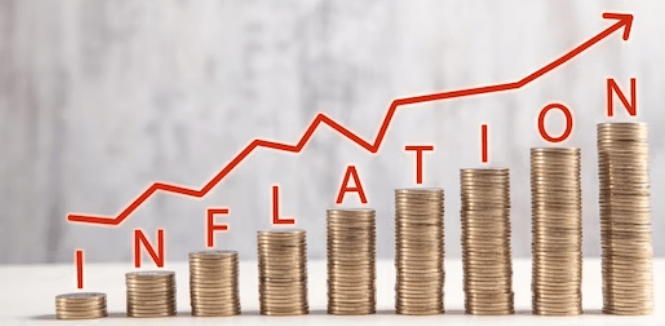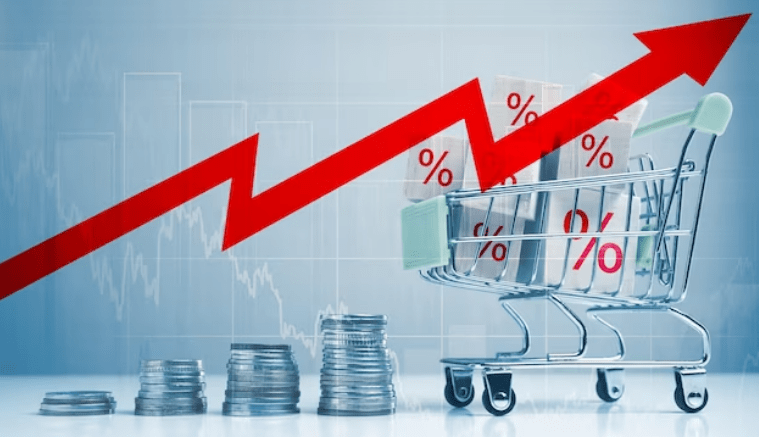Introduction:
Consumer Price Index (CPI) inflation is an important economic metric that shows how prices for goods and services have changed over time. The definition, causes, impacts on the economy, and possible management and mitigating techniques of CPI inflation are all covered in this article.
CPI Inflation Definition:
The Consumer Price Index (CPI) is a metric that looks at the weighted average of costs for various consumer products and services, including food, medical care, and transportation. The CPI measures inflation as the pace at which these goods and services prices rise over time. A higher CPI indicates that a country’s currency has less buying power.
Calculation of CPI:
There are multiple procedures involved in calculating the CPI. First, the collection of prices of the items in the basket is for a base year of choice. The price changes as a percentage and is then possible for computation by adding up all the prices of the same goods for each following period. We can calculate CPI by using the formula below:
CPI= (Cost of Basket in Current Year/ Cost of Basket in Base Year)*100
Causes of CPI Inflation:
Demand-Pull Inflation:
When the demand for products and services outpaces their availability, inflation, known as “demand-pull”, arises. It is usually associated with times of economic expansion, increased consumer spending, and low unemployment rates. Prices typically increase when demand exceeds supply.
Cost-Push Inflation:
Cost-push inflation is a phenomenon that growing production expenses, such as salary increases or rising raw material prices, can bring on. Businesses may raise the prices of goods and services to pass on increasing expenditures to customers.
Built-In Inflation:
Built-in inflation, sometimes called wage-price inflation, is when employees demand more pay, and companies respond by raising prices to preserve their profit margins. It leads to a cycle of growing wages and prices.
Significance of CPI Inflation:
For several reasons, CPI inflation is an important economic indicator:
Cost of Living:
The CPI is a crucial instrument for evaluating shifts in the cost of living. It aids in the understanding of how much more or less income is needed to maintain a steady standard of life by people, corporations, and policymakers.
Wage Adjustments:
Many government perks and labour contracts depend on variations in the CPI. Wages and benefits may be changed in response to rising inflation to help people afford the higher cost of living.
Monetary Policy:
Central banks, such as the Federal Reserve in the US, use CPI inflation as a reference to determine monetary policy. One of the main objectives for preserving economic stability is frequently to control inflation.
Investment Decisions:
CPI data are helpful for businesses and investors to make well-informed choices regarding pricing policies, resource allocation, and investments.
Impacts of CPI Inflation:
Erosion of Purchasing Power:
Consumers’ purchasing power declines as prices rise. It implies that people’s level of life may decline due to needing more money to purchase the same products and services.

Businesses May Experience Uncertainty:
Due to inflation, businesses may need help to plan. Quick price spikes can affect long-term planning and investment decisions by interfering with forecasting and budgeting.
Interest Rate Adjustments:
Interest rate adjustments are a common tactic central banks use to rein down inflation. Central banks may increase interest rates to calm economic activity and lessen inflationary pressures during high CPI inflation. Higher interest rates, though, can impede economic expansion.
Effects of CPI Inflation:
Effect on Consumers:
As the CPI rises, consumers’ ability to afford goods and services is impacted because money loses purchasing power.
Investments:
A high inflation rate lowers the real return on investments so it might affect investment returns.
Interest Rates:
In reaction to changes in the CPI, central banks may modify interest rates, which can impact borrowing costs and investment choices.
Challenges and Criticisms:
Substitution Bias:
According to critics, the CPI does not accurately reflect shifts in consumer behaviour, such as switching products and services in reaction to price adjustments.
Quality Shifts:
An overestimation of inflation may result from the CPI’s failure to represent advances in product quality accurately.
Regional Variations:
There could be differences in the cost of living because the CPI may not fairly reflect inflation for all demographic groups or geographical areas.
Strategies to Manage CPI Inflation:
Monetary Policy:
Central banks, like the US Federal Reserve, use monetary policy instruments to manage inflation. Common tactics to affect inflation rates include changing reserve requirements, open market operations, and interest rate adjustments.
Fiscal Policy:
Taxation and public spending are two examples of fiscal tools that governments can employ to control inflation. Higher government expenditure can boost the economy in times of low inflation, while austerity measures help to reduce inflation.
Supply-Side Policies:
Increasing the availability of products and services is one way to reduce inflationary pressures. It includes actions to raise infrastructure, simplify rules, and increase production.
Conclusion:
A key economic indicator, CPI inflation, sheds light on how prices are increasing and how they affect both consumers and the economy as a whole. People, businesses, and policymakers closely monitor CPI statistics to make well-informed decisions about financial planning, investments, and economic policies. It is crucial to comprehend CPI inflation to promote economic stability and guarantee that everyone can afford a reasonable standard of living.


